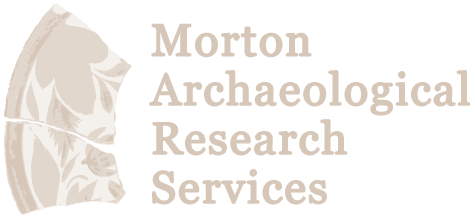Technology in Archaeology:
Cultural Resource Management Comes of Age
Morton Archaeological Research Services provides a full range of archaeological services for cultural resource management, site preservation, and historic documentation across New York State.
Wildnote is a business-based solution for [the archaeology] industry. You become more competitive on proposals and more profitable at the same time, which is a win-win.
Luke Carretta, Morton Archaeological Research Services
Making History More Accessible
Luke Carretta studies the past and dreams about the future. With 10 years’ experience as a Cultural Resource Management (CRM) archaeologist, Carretta currently serves as crew chief, project management assistant, and laboratory supervisor for Morton Archaeological Research Services in New York State. He believes the real value of archaeology lies in making the historical record available to other archaeologists, the public, and enthusiasts. He hopes others will follow in his footsteps adopting technology in archaeology.
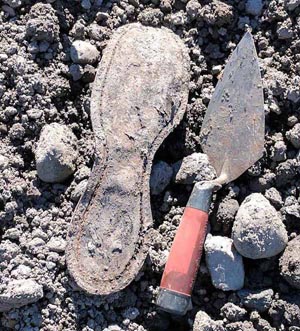
CRM photo log of an old boot-sole found on a Utica NY construction site.
Archaeology Technology: Cultural Resource Management Pioneer
As an early adopter of digital CRM record-keeping, Carretta is all about moving archaeology into the digital age. After exploring other software, he recently adopted Wildnote as his cross-platform solution for collecting, reporting, and managing archaeological data.
I used Tap Forms for a few years, which was decent but had its problems, mostly with merging documents and surveys across multiple platforms. It was only available on IOS and it had very little tech support. I decided on Wildnote for several reasons. The main one being that I knew Chris Webster [DIGTECH] was actively working with the company and, quite honestly, I’ve been following Chris for several years, and he is truly the pioneer of tech in archaeology. He has been pushing the industry in the direction that it needs to go.
He particularly appreciates the cultural resource management report export options, customer service, and ease of use. “On the recording end, it’s the easiest app I’ve ever used,” he said.
Carretta points out that the business aspect of CRM creates a different set of needs than the pure research of academic archaeology.
“At the end of the day, this is a business, and a business requires efficiency and business solutions. Just because it’s sort of academic doesn’t mean it’s still not business. Our business is to produce good archaeology. That’s what we’re tasked to do.”
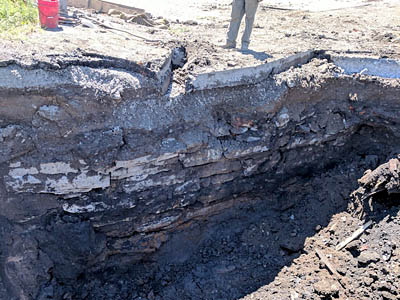
Ease of Retrieving CRM Digital Archives
Meeting a timeline within budget is a goal for any project and it can mean life or death for a business.
“Technically, at the end of the day, we use some of the same methods that academic archaeology does, but with much greater time constraints in CRM. CRM is how about 90% of the archaeology in the world is done. So, to treat them as equals is sort of setting yourself up for failure on a business level, in my opinion. We have to employ different methods, and one of those methods needs to be utilizing digital recording, exporting, and archiving.”
Aside from the benefits of increased efficiency, Carretta is convinced it’s essential to advance the use of technology in archaeology: it promotes accessibility, making information useful. “Currently,” he said, “information is collected and stored, but it isn’t recorded in a way that makes it easily retrievable.” Carretta is always looking for ways to improve the bottom line and build a better business.
“Good archaeology equals good records. Currently, archaeological information mostly just sits in a box, or on somebody’s computer, and it dies there. Now, if somebody wanted to go get it, I guess they could, but as time goes by, these things get scattered and lost. So, in my estimation, this doesn’t equate to good archaeology – it’s bad archaeology because you’re doing all this work but it’s not anywhere that it’s accessible to anybody. My dream is to have a digital repository that can be searched and added to by archaeologists everywhere.”
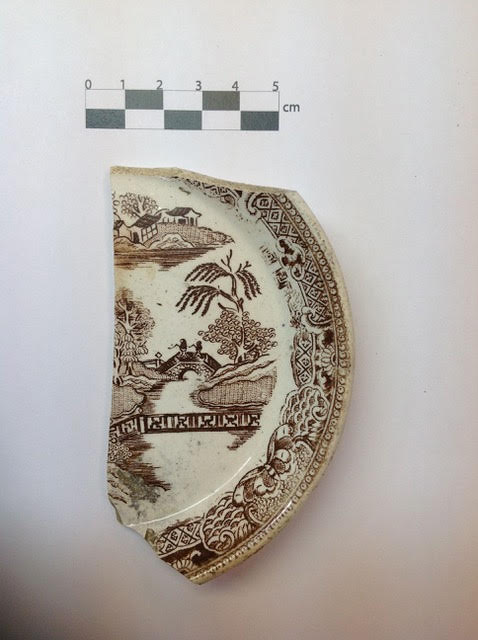
Wildnote automates the labor-intensive task of photo logging artifacts.
Cultural Resource Management Field Notes and Photos Matched
To increase efficiency, improve accuracy and master organization, Carretta chose Wildnote. The result? Greater accessibility, with no loss of security or confidentiality. With Wildnote, you only enter data once. Simplified data entry, an integrated photo gallery, pre-built forms, and industry-specific exports have ensured a reduction in project costs. No longer is Carretta tediously matching photos with hand-written notes taken in the field. Wildnote streamlines the geotagging, captioning, and uploading of photos, making it perfectly suited to cultural resource management.
Carretta praises Wildnote’s client-centered service.
“Wildnote is willing to work with people, actually get on the phone and listen to people’s concerns and be able to work out any of the bugs. I think that’s huge. The customer service aspect is incredible. I can literally talk to someone any time. It’s so easy. I just send a message on the website, I receive an email or a call right away, and I don’t have to go through some phone tree and be irritated.”
He compliments Wildnote’s technical expertise and personalized support.
“Different projects require something a little different than the standard form, and Wildnote has that. This is sort of a new thing, and Nancy [Douglas] is great working with me. I say, ‘I need this thing to do this,’ and she says, ‘Okay, we’ll figure that out.’”
Carretta appreciates the practicality of Wildnote’s one-month free trial. Prospective clients have the opportunity to see their finished reports and understand how data flows through the system and is securely stored in the cloud until the project manager removes it . “With the 30-day free trial that lets you field test it, I think it sells itself, I don’t see how you couldn’t like it,” he said.
By switching to Wildnote, Carretta saves significantly on man hours and project expenditure for shovel testing. Before adopting technology in archeology and going digital, he spent at least 2-3 minutes typing up every shovel test form. Now he only enters data once. What’s more, it’s all organized and the forms generated with just a few, quick clicks. Owner Ann Morton particularly values the added data security that comes with going digital. “It doesn’t just save time, it also protects data – no more lost forms!”
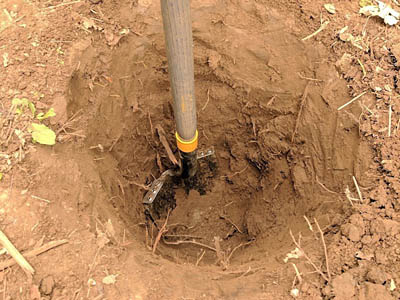
Shovel test pits are the repetitive motion of archaeological investigation.
Using Technology in Archaeology Significantly Cuts Shovel Test Costs
Carretta typically undertakes between 50 and 1500 shovel tests per job. With just minimal use, Wildnote creates a return on his investment, and he notes the benefit of a marked competitive advantage as use increases.
“If you have a big project with 1000 to 2000 shovel tests, that’s a couple of weeks-worth of work! When you can take those hours out of the budget and not have to put them toward data entry, they can go towards doing other more important things. You’re eliminating that ‘stupid repetitive thing’ that has to be done, so now you can do a better job for less money. You become more competitive on proposals and more profitable at the same time, which is a win-win. In my opinion, Wildnote is a business-based solution for this industry.”
Archaeology Technology: Field Data Entry to Cloud Database Security
Mobile devices and cloud technology now work together to create a direct link from data entry to secure database storage. Paper forms are eradicated from the CRM process, and printable, agency-standard reports are generated automatically. With everything entered directly into a database, those who want or need paper records can still have them – completed faster, with more data accuracy and greater utility.
“The recording is just the tip of the iceberg. There are applications for archiving and cataloging, and so many different types of things allow you to manipulate the digital record in ways that you can make it accessible to people. I keep coming back around to that, but that’s basically the center point of all this – making the information useful instead of sitting in a box.”
Additional Information:
Download a PDF of the Morton Archaeological Case Study
Contact Wildnote’s archaeology specialist, Chris Website: chris@wildnoteapp.com

